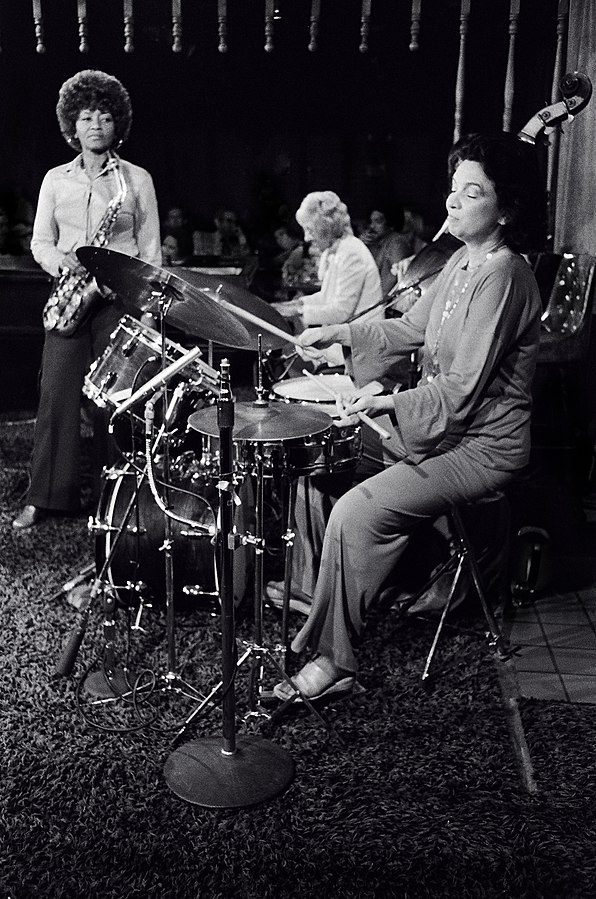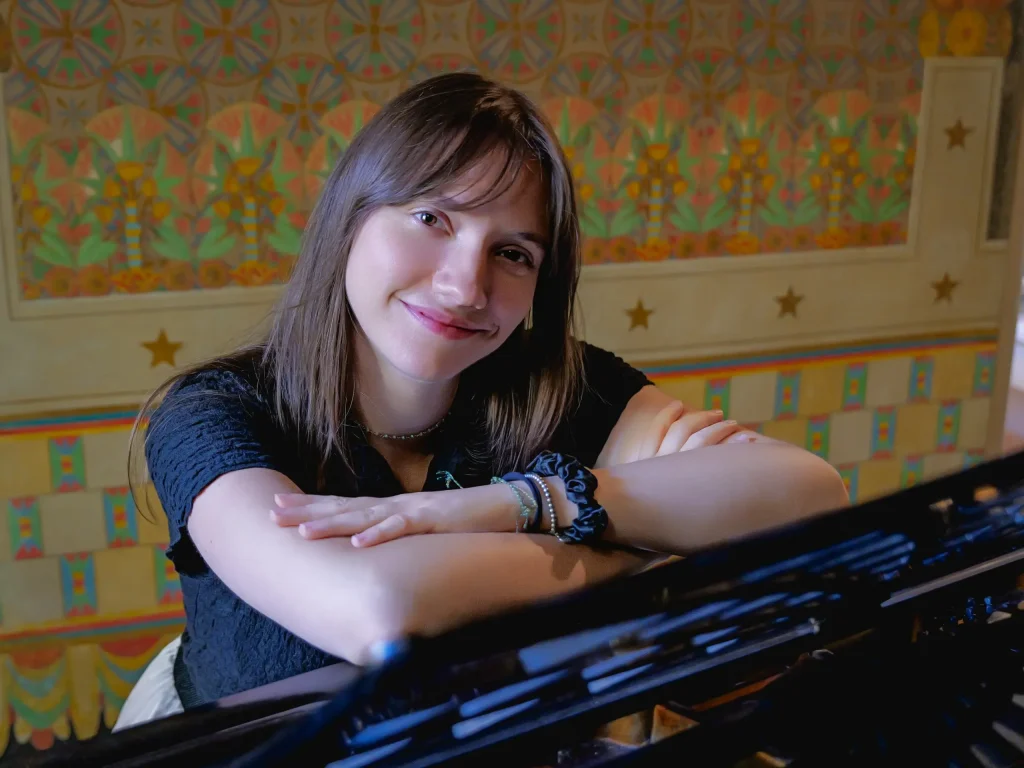Los Angeles, California, September 20, 1928
February 6, 2022

In the jazz scene of the 1940s, a female alto saxophonist stands out: Elvira “Vi” Redd, a talented musician from California, born in the late 1920s.
Beginnings and influences
Raised in a family deeply immersed in music, Vi Redd distinguished herself as one of the few female saxophonists to earn respect and recognition in a male-dominated world.
Her musical career was shaped by significant influences from an early age. Her aunt, Alma Hightower, was a mentor and teacher to young African American musicians in Los Angeles, playing a crucial role not only in Vi’s development but also in that of artists like Melba Liston, a pioneering jazz trombonist. Vi’s father, Alton Redd, was a drummer skilled in the New Orleans style, while her brother and future husband, Richie Goldberg, were also percussionists.
Vi’s brilliance began to emerge on the international stage in the 1960s when she recorded as a bandleader and gained critical acclaim. Known primarily for her work on the alto saxophone, Vi also showcased her versatility by playing the soprano sax and demonstrating remarkable vocal abilities.
Her music was steeped in the blues, blending sweetness and grit while capturing the sermon-like energy of bebop. Some critics compared her to Charlie Parker, the bebop pioneer, due to the intensity and depth of her musical expression.
Jazz critic Leonard Feather once remarked:
“She has too much talent. Is she a soul-blues-jazz singer who plays alto sax? Or is she a Charlie Parker-inspired saxophonist who also sings? There are mixed opinions on whether her primary instrument was the saxophone or her voice.”
I respectfully disagree with the legendary critic. It is essential to highlight Vi Redd’s unique sound and personality—just as with any jazz musician, regardless of gender. While Parker’s influence is undeniable, it is not the defining element of her artistry. Her experience allowed her to transform bebop into a personal and original language, moving beyond homage to become purely Vi Redd.
A career alongside jazz legends
Vi Redd collaborated with some of the most iconic figures in jazz, including Max Roach (drums), Roland Kirk (saxophone, flute), Marian McPartland (piano), and Dizzy Gillespie (trumpet). Her tours as a bandleader took her across Europe, Africa, and Japan, establishing her as an international artist.
In 1968, she participated in the African tour with Count Basie’s celebrated orchestra—an experience that cemented her status as a world-renowned musician.

Talent in a Male-Dominated World
Despite her success, Vi Redd faced many challenges throughout her musical and personal journey. As Leonard Feather noted in the early 1960s, jazz was still deeply ingrained with gender biases (and one could argue that this hasn’t changed significantly). These prejudices made it difficult for women to receive the same recognition as their male counterparts. However, Feather acknowledged Vi’s indomitable spirit and even speculated that she could become the first great female saxophonist in jazz history—if only the world were ready to recognize her worth.
Beyond music, Vi Redd dedicated herself to educating young students in California after earning a degree in social sciences, proving that her cultural contributions extended far beyond the stage.
…To be continued…
I invite you to read the next article to discover Vi Redd’s three essential albums and listen to some of her magnificent performances!

